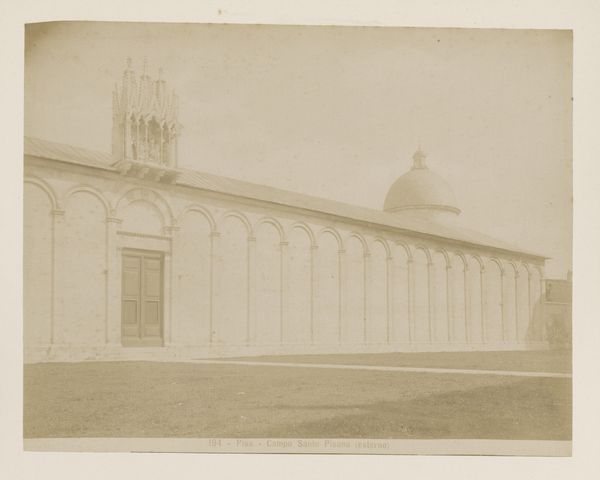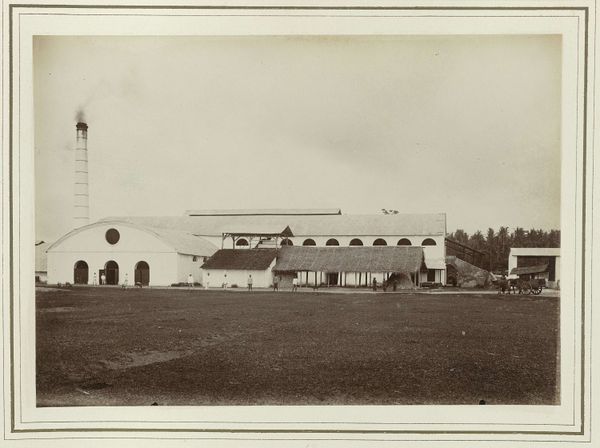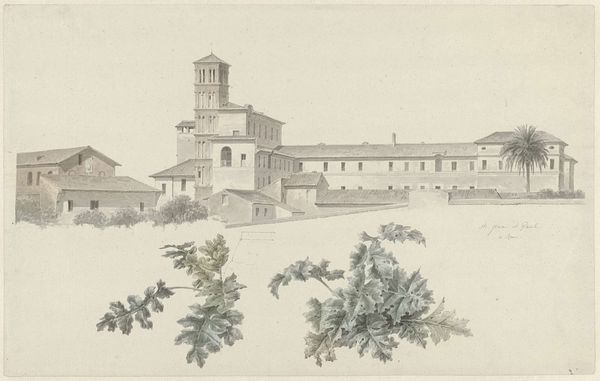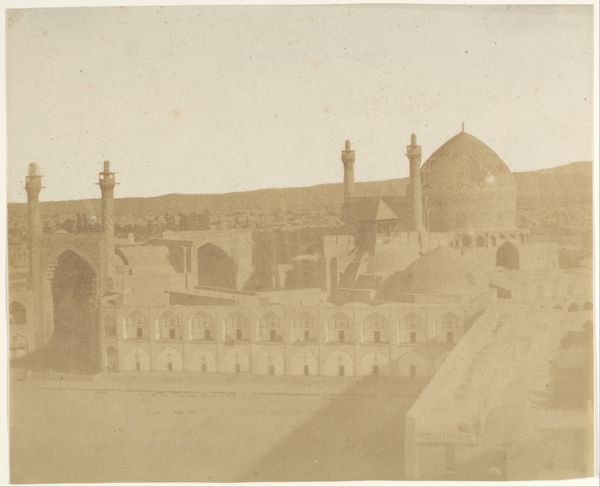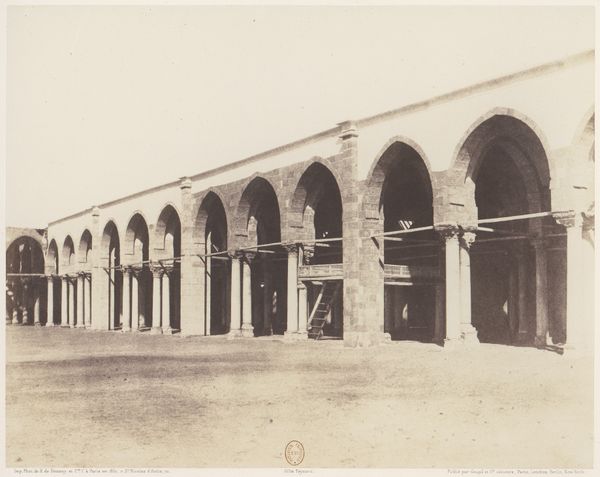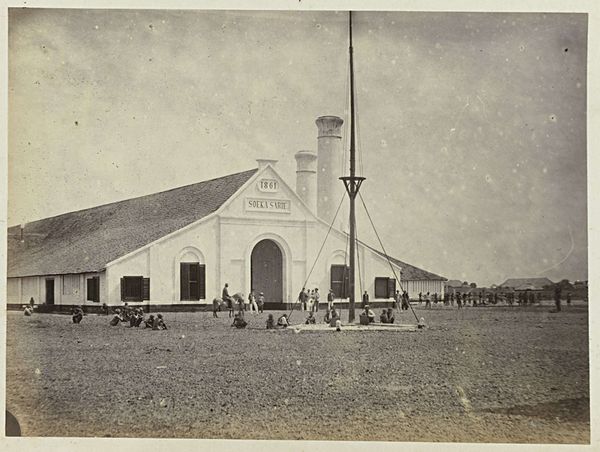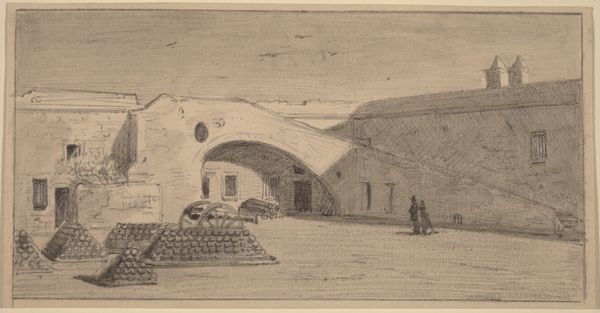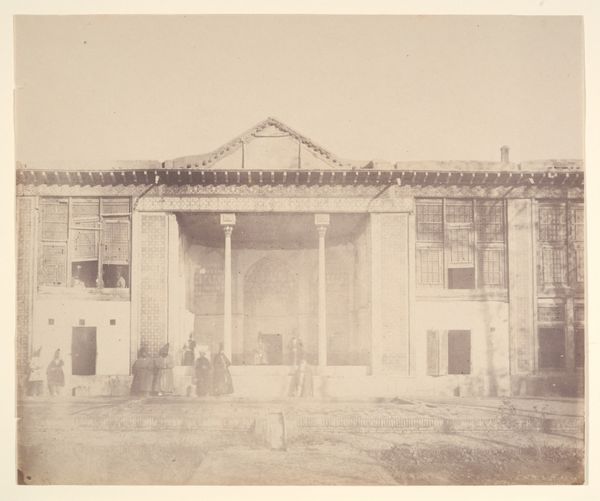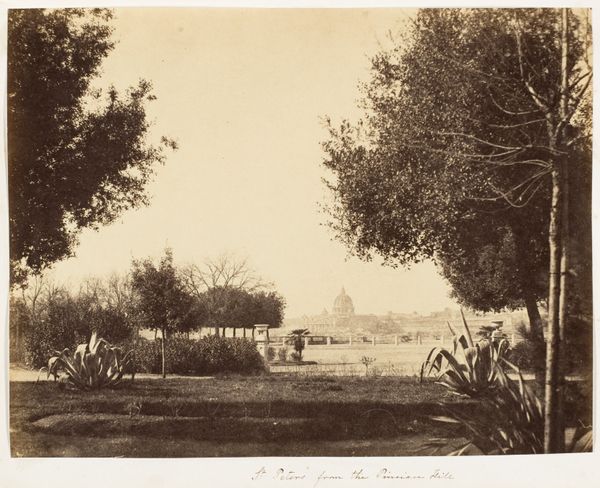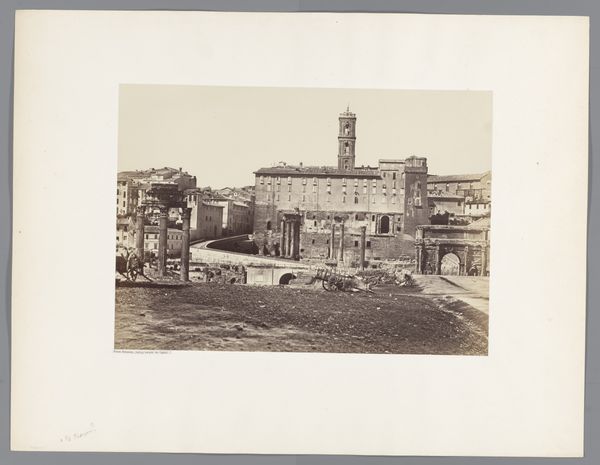
print, photography, site-specific, gelatin-silver-print
#
photo of handprinted image
#
aged paper
#
wedding photograph
# print
#
landscape
#
photography
#
historical photography
#
site-specific
#
gelatin-silver-print
Dimensions: height 150 mm, width 210 mm
Copyright: Rijks Museum: Open Domain
Editor: This is Kassian Céphas’ "Fabriek Sedaijoe," a gelatin-silver print from 1886. The aged tones give it a real sense of history. It's so interesting to look at old photographs like this, imagining a past world. What do you see when you look at it? Curator: The photograph presents a fascinating study in light and form. Notice how the strong horizontal lines of the factory building are contrasted by the softer textures of the natural elements in the foreground. Consider the formal qualities of light, too: the way it falls across the façade, creating depth. Are there other visual components that capture your attention? Editor: Well, I'm intrigued by the architectural composition; it's so geometrical in contrast to the nature around it. I see almost no tonal variation within the building itself. Could that inform some type of reading, even though this photograph serves as documentary evidence of this particular building? Curator: Precisely. That contrast is integral. The starkness emphasizes the building's imposing presence. It serves not only as documentation, but also as an interpretation of spatial organization through contrasts between natural and constructed spaces. It encourages you to look at negative space as structure. Does a particular aesthetic philosophy spring to mind? Editor: I’m still processing, I guess. Is it the lines, textures and juxtaposition of geometry that really carries the meaning? It is so difficult to move away from content, but the effect would change quite dramatically if the natural setting around the factory were modified, right? Curator: Yes, altering any visual component affects the work’s delicate equilibrium. Thank you for noticing those relational balances. By studying these formal properties, we enhance our comprehension. Editor: I’ve certainly noticed things that I would have previously ignored by examining solely composition, lines, form and visual components!
Comments
No comments
Be the first to comment and join the conversation on the ultimate creative platform.
